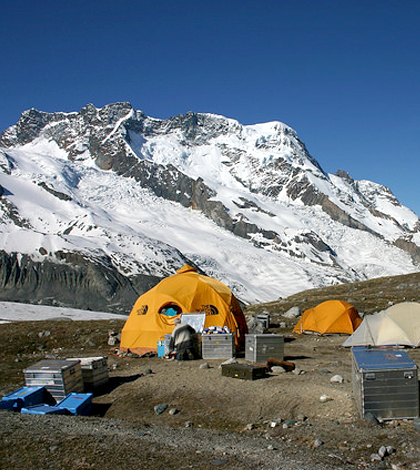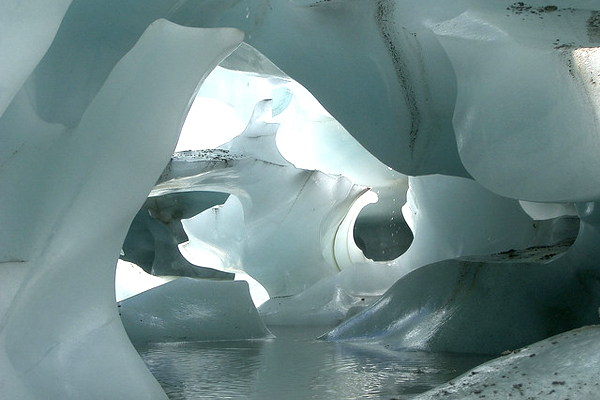Scripps scientists find glacier in Swiss Alps emits harmonic tremors

Glaciers have been known to hum in polar regions, emitting sounds that scientists call gliding harmonic tremors. Scientists at Scripps Institution of Oceanography have found that similar humming glaciers can be found in the Swiss Alps.
By analyzing a month’s worth of data from seismometers deployed at Gorner Glacier, scientists at the institution, housed at University of California, San Diego, identified a 21-hour period of humming. Their work confirms that glaciers other than polar ones can emit such sounds, and also provides insights into mechanisms linked to water movement within glaciers.
“The ‘humming’ or gliding harmonic tremor is an indication of the processes occurring within the glacier. We hypothesize that it is directly tied to water moving through a network of cracks within the glacier,” said David Heeszel, a former postdoctoral researcher at UC San Diego who now works at the U.S. Nuclear Regulatory Commission. “This marks one of the first times that we have been able to remotely observe the movement of water within a glacier.”
Heeszel says the harmonic tremors have been found in other environments as well, most commonly near volcanoes. Ice sheets, too, have emitted the hums. But studying them is often expensive and time-consuming due to drilling. The method used by the Scripps team using seismometers at the surface can be employed by other investigators to cut costs, he says.

Data obtained during an expedition in Switzerland led to the discovery of humming glaciers. (Credit: Scripps Institution of Oceanography)
“Traditionally, we can observe water going into and out of a glacier, or we can drill a hole and make a point observation of hydrologic processes,” said Heeszel. “Our observations show that it is possible to remotely observe and model this process.”
Scientists found that lake formation at one edge of Gorner Glacier each spring shows the potential it has to act as a large storehouse for fresh water – several million gallons in Gorner’s case. Studying this capacity can be helpful for those living nearby because the water stored can serve as a resource or a flooding hazard.
The discovery of the 21-hour humming period wasn’t much of a surprise to researchers, and Heeszel says there’s no reason to believe that Gorner Glacier is unique. Other glaciers can emit similar sounds.
“I’m not particularly surprised at our results, particularly the observational evidence,” said Heeszel. “In my experience, there is always something interesting in a dataset. It’s simply a matter of looking at it with an open mind.”
Top image: Research camp in Switzerland. (Credit: Scripps Institution of Oceanography)





0 comments